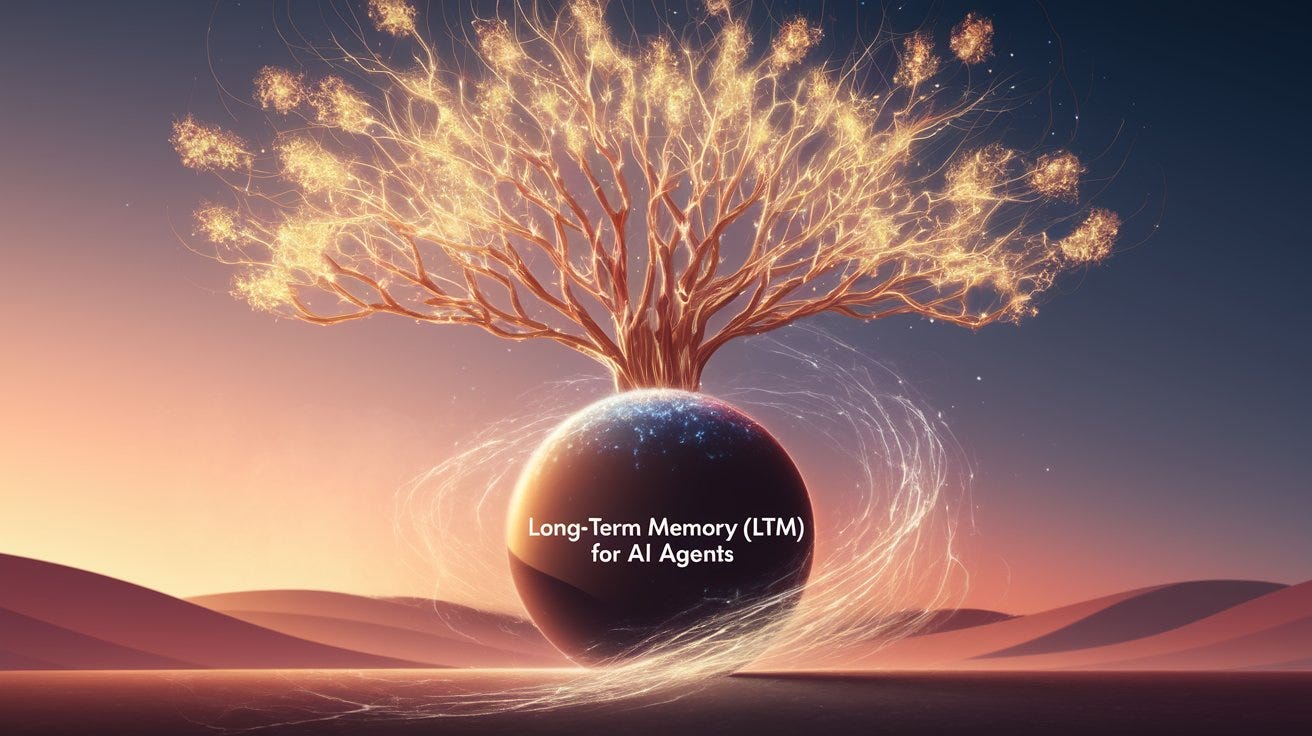How to Implement Memory for AI Agents: A Complete Guide
AI agents are getting smarter, but one of the biggest challenges they face is memory. Unlike humans, most AI models today operate statelessly — they don’t remember past interactions unless explicitly designed to do so. This limitation prevents AI from becoming truly intelligent, adaptive, and useful in real-world applications.
So, how do we implement memory in AI agents that is easy to retrieve, effective, and scalable? In this guide, we’ll explore different memory architectures, best practices, and the tech stack needed to build an AI agent with persistent memory. Let’s dive in!
Why Memory Matters in AI Agents
Imagine talking to an AI assistant today, teaching it your preferences, and then having it remember those details the next time you chat. This ability to "remember" past interactions and use that information in the future is what AI memory is all about.
Artificial Intelligence (AI) memory allows AI agents—like chatbots, virtual assistants, self-driving cars, and even robots—to recall past experiences, learn from them, and improve their responses over time. Unlike traditional computing systems that only process real-time data, AI with memory can adapt, improve, and personalize its interactions, making it more human-like.
Every time you interact, you’d have to repeat your preferences, past conversations, and context. That’s frustrating, right? Memory is essential for:
Personalization - AI can remember user preferences and tailor responses.
Context Retention - AI can recall past interactions to provide relevant answers.
Learning & Adaptation - AI can improve over time by remembering what worked before.
Efficiency - Memory reduces repetitive queries, making interactions smoother.
Decision-Making - AI can analyze past patterns for smarter insights.
But how exactly does AI memory work? What types of memory do AI systems use, and why is it important? Let's try to understand how machines can "remember" and "learn" just like humans.
How AI Agents Process and Store Information
AI memory doesn’t work like human memory, which is based on emotions, senses, and experiences. Instead, AI processes and stores information through structured algorithms. Here's how it happens:
Step 1: Encoding
The AI receives input—this could be a voice command, text, or sensor data. It processes this data and converts it into a format it can understand.
Step 2: Storage
Depending on the importance of the data, AI stores it in either short-term or long-term memory. Temporary information is discarded after use, while valuable data is saved for future reference.
Step 3: Retrieval
When needed, AI retrieves stored information. This helps it recognize patterns, recall past interactions, and improve decision-making.
Step 4: Adaptation
Some AI systems use advanced learning techniques to refine their memory. This means AI can "forget" outdated information and prioritize relevant data for improved efficiency.
To make AI agents truly human-like and useful, we need structured memory systems. Let’s explore how to do it.
The Four Types of Memory in AI
For effective AI memory, we need a hybrid system that includes different types of memory:
1. Short-Term Memory (STM)
Short-term memory in AI functions similarly to how our brain holds information for immediate use. Think of it like when you remember a phone number long enough to dial it but forget it soon after.
AI systems use short-term memory for:
Processing real-time conversations in chatbots.
Keeping track of recent commands given to virtual assistants.
Temporary data storage for immediate calculations and decision-making.
Used for context windows in LLMs (like GPT models).
Example:
A chatbot remembering the last 5–10 messages in a conversation.
2. Long-Term Memory (LTM)
Long-term memory in AI is where data is stored for extended periods, allowing AI agents to recall and reuse information even after a long time. Without long-term memory, AI would always start from scratch, making interactions frustrating and inefficient.
AI systems use short-term memory for:
AI-powered recommendation systems (like Netflix or YouTube) remember your watch history to suggest content.
Virtual assistants (like Alexa or Siri) recall frequently used commands to provide better suggestions.
AI-driven customer support bots remember previous interactions to improve responses.
Example:
A customer support AI remembering a user’s issue from last month.
3. Episodic Memory
Episodic memory is where things get really interesting. This type of memory allows AI to recall past experiences and apply them in future scenarios.
For instance:
A self-driving car can "remember" past road conditions and use that knowledge to navigate similar situations.
A chatbot can recall a customer's previous complaints and ensure they are not asked to repeat them.
This kind of memory is crucial for AI to feel more natural and human-like in its responses.
4. Semantic Memory
Semantic memory stores factual knowledge.
Not tied to individual interactions but helps AI build intelligence.
Stores information in a structured way (like a knowledge graph).
Example:
An AI recalling the capital of a country or business facts.
Best AI agents use a combination of all four memory types!
Techniques to Implement AI Memory Effectively
Now that we know what types of memory AI agents need, let’s explore how to implement them.
1. Using Vector Databases for Efficient Retrieval
Vector databases are great for storing and retrieving unstructured data (like conversations, documents, and embeddings).
How it works:
AI converts text into vector embeddings (numerical representations).
When needed, AI searches for the closest match using cosine similarity.
Use Case:
AI chatbot remembering similar past user queries to provide better answers.
Tools: FAISS, Pinecone, Weaviate, ChromaDB
2. Knowledge Graphs for Structured Memory
Knowledge graphs store relationships between concepts, people, and events in a structured way.
How it works:
AI stores information in nodes and edges.
AI can traverse the graph to find related concepts.
Use Case:
A medical AI assistant remembers a patient’s symptoms and links them to potential diagnoses.
Tools: Neo4j, ArangoDB
3. Summarization for Efficient Memory Storage
Storing raw text from every interaction is expensive and inefficient. Instead, AI should generate summaries of key interactions.
How it works:
AI extracts key takeaways from long conversations.
Stores only important insights instead of full text logs.
Use Case:
AI summarizing customer support interactions to help future agents understand past complaints.
Tools: LangChain’s summarization pipeline, GPT-based chunking & retrieval
4. Hybrid Approach: Combining Retrieval-Augmented Generation (RAG)
The best memory system for AI agents combines multiple techniques:
Vector search (retrieves similar past interactions)
Summarization (remembers key insights)
Structured storage (SQL/NoSQL for user preferences)
Knowledge graphs (connects insights)
Use Case:
AI-powered legal assistant retrieving past case laws while linking them to client history.
Tools: FAISS + LangChain + Neo4j + SQL
Best Practices for AI Memory Implementation
To make your AI memory system efficient and scalable, follow these best practices:
Balance Storage and Speed - Store only relevant data to prevent slow retrieval.
Use Summarization - Instead of raw text, store concise summaries.
Hybrid Memory Systems - Combine vector search, graphs, and databases. Regularly Update Memory - AI should forget outdated information and refresh knowledge.
Security & Privacy - Ensure sensitive user data is encrypted and not misused.
Conclusion: The Future of AI Memory
AI agents with persistent, structured memory are the future. Whether it’s chatbots, virtual assistants, or AI-powered research tools, memory plays a crucial role in making them smarter and more adaptive.
By implementing a hybrid memory system with:
You can build AI agents that learn, evolve, and provide human-like experiences.
What’s your take? How do you think AI memory will shape the future? Drop your thoughts in the comments!
And that’s a wrap for this edition! Stay tuned for more updates in the next newsletter. Until then, take care and stay curious!







